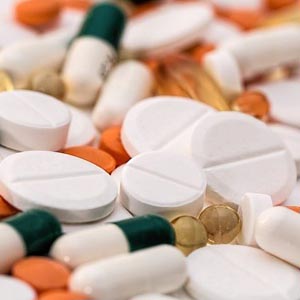A concept for causality assessment and causal inference of adverse events cases

Accepted: October 19, 2022
All claims expressed in this article are solely those of the authors and do not necessarily represent those of their affiliated organizations, or those of the publisher, the editors and the reviewers. Any product that may be evaluated in this article or claim that may be made by its manufacturer is not guaranteed or endorsed by the publisher.
Dear Editor,
Causality assessment of adverse drug events is essential in pharmacovigilance to assess the relationship between the medicine and the event.1,2 Regulatory authorities recommend using standardized methods for causality assessment.3,4 The World Health Organization-Uppsala Monitoring Center (WHO-UMC) system offers generalized criteria for establishing causal relationships.3 In contrast, the Roussel Uclaf Causality Assessment Method (RUCAM) provides a specialized system to assess Drug-Induced Liver Injury (DILI) cases. We systematically reviewed the literature and verified that these systems are among the best tools currently available for signal detection and causality assessment. [...]
Edwards IR, Aronson JK. Adverse drug reactions: definitions, diagnosis, and management. Lancet 2000;356:1255-9.
Al-Imam A, Motyka MA, Witulska Z, et al. Spatiotemporal mapping of online interest in cannabis and popular psychedelics before and during the COVID-19 pandemic in Poland. Int J Environ Res Public Health 2022;19:6619.
The World Health Organization. The use of the WHO-UMC system for standardised case causality assessment [Internet]. Who.int. 2013.Accessed 1 July 2022. Available from: https://www.who.int/publications/m/item/WHO-causality-assessment
LiverTox: Clinical and research information on drug-induced liver injury [Internet]. Bethesda (MD): National Institute of Diabetes and Digestive and Kidney Diseases; 2012. Roussel Uclaf Causality Assessment Method (RUCAM) in Drug Induced Liver Injury. Updated 2019 May 4. Available from: https://www.ncbi.nlm.nih.gov/books/NBK548272/
Drug-induced liver injury (DILI): Current status and future directions for drug development and the post-market setting. A consensus by a CIOMS Working Group. Geneva, Switzerland: Council for International Organizations of Medical Sciences (CIOMS), 2020.
Kassid OM, Odhaib SA, Altemimi MT. Flutamide-induced hepatotoxicity: A case report. J Biol Res 2022; ahead of print. doi: 10.4081/jbr.2022.10371
U.S. Food and Drug Administration. DILIrank [Internet]. Liver Toxicity Knowledge Base (LTKB). 2022. Accessed 1 July 2022. Available from: https://www.fda.gov/science-research/bioinformatics-tools/liver-toxicity-knowledge-base-ltkb
LiverTox: Clinical and research information on drug-induced liver injury [Internet]. Bethesda (MD): National Institute of Diabetes and Digestive and Kidney Diseases; 2012. PMID: 31643176.
Larasati A, DeYong C, Slevitch L. Comparing neural network and ordinal logistic regression to analyze attitude responses. Serv Sci 2011;3:304-12.
Uppsala Monitoring Centre. VigiFlow [Internet]. Vigiflow.who-umc.org. 2022. Accessed 29 September 2022. Available from: https://vigiflow.who-umc.org/
Uppsala Monitoring Centre. VigiLyze [Internet]. Vigiflow.who-umc.org. 2022. Accessed 29 September 2022. Available from: https://vigilyze.who-umc.org/
Abd AK, Kadhim DJ, Younus MM. Assessment of causality, severity and seriousness of adverse event following immunization in Iraq: A retrospective study based on Iraqi Pharmacovigilance Database. Iraqi J Pharm Sci 2019;28:142-50.
Al-Imam A. Optimizing Linear Models via Sinusoidal Transformation for Boosted Machine Learning in Medicine. J Fac Med Baghdad 2019;61:128-36.
Copyright (c) 2022 the Authors

This work is licensed under a Creative Commons Attribution-NonCommercial 4.0 International License.
PAGEPress has chosen to apply the Creative Commons Attribution NonCommercial 4.0 International License (CC BY-NC 4.0) to all manuscripts to be published.


 https://doi.org/10.4081/jbr.2022.10772
https://doi.org/10.4081/jbr.2022.10772



